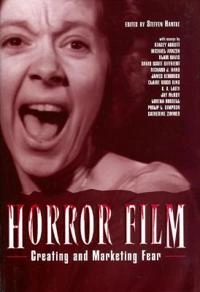In large part due to its emphasis on gore, screaming teenage girls, and otherworldly elements, horror films have received little critical attention from mainstream movie magazines and film-studies journals. In Horror Film: Creating and Marketing Fear, essayists focus primarily on how film technology, marketing, and distribution effectively create the aesthetics and reception of horror films. Previously unpublished, these essays cover several styles of horror film-including the silent German Expressionist masterpiece Nosferatu, the jittery mock-documentary The Blair Witch Project, and the gracefully shot The Exorcist. Essayists question how lighting, editing techniques, sound, and camera and film equipment affect how viewers perceive a horror movie. Some essays focus on groundbreaking films, such as Michael Powell's Peeping Tom and Robert Aldrich's What Ever Happened to Baby Jane? Most concentrate on a specific technique and how it is used in a variety of horror movies. Contributors explore how the evolution of editing in horror films and more realistic special effects have changed how these movies are made. Marketing and distribution are also explored to ascertain how the genre has become part of the American mainstream. Using a variety of critical approaches and concentrating on aspects of horror film that have been overlooked, Horror Film: Creating and Marketing Fear is a valuable, original addition to the growing body of work on the genre. Steffen Hantke, a professor of English at Sogang University in Seoul, South Korea, is the author of Conspiracy and Paranoia in Contemporary American Literature: The Works of Don DeLillo and Joseph McElroy.
Åtkomstkoder och digitalt tilläggsmaterial garanteras inte med begagnade böcker





















